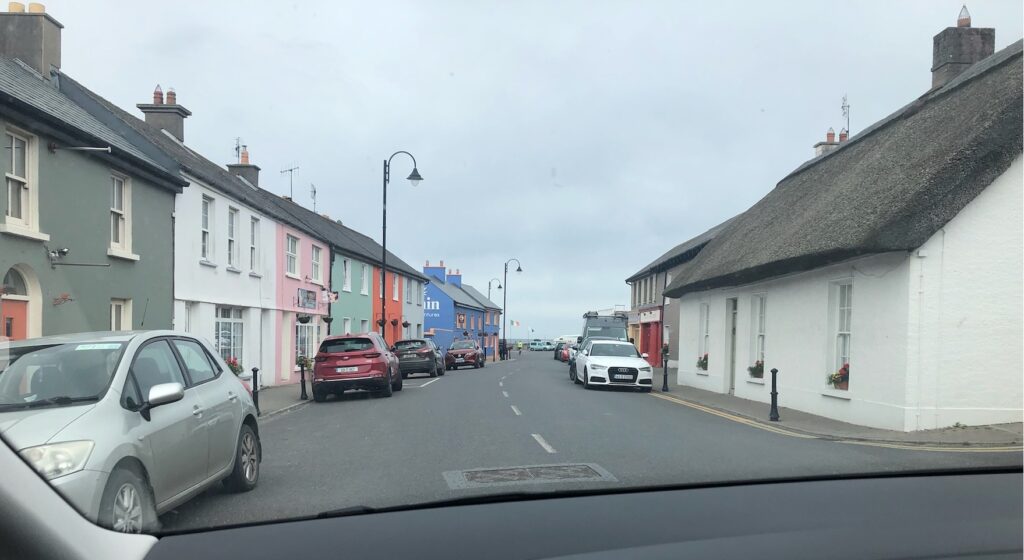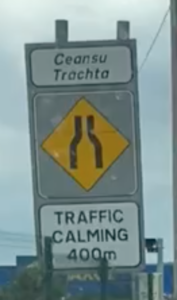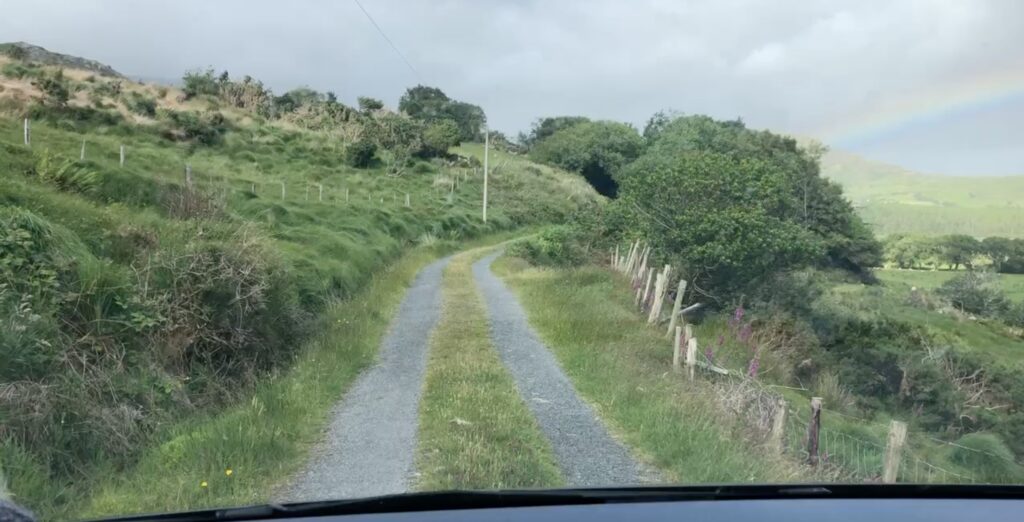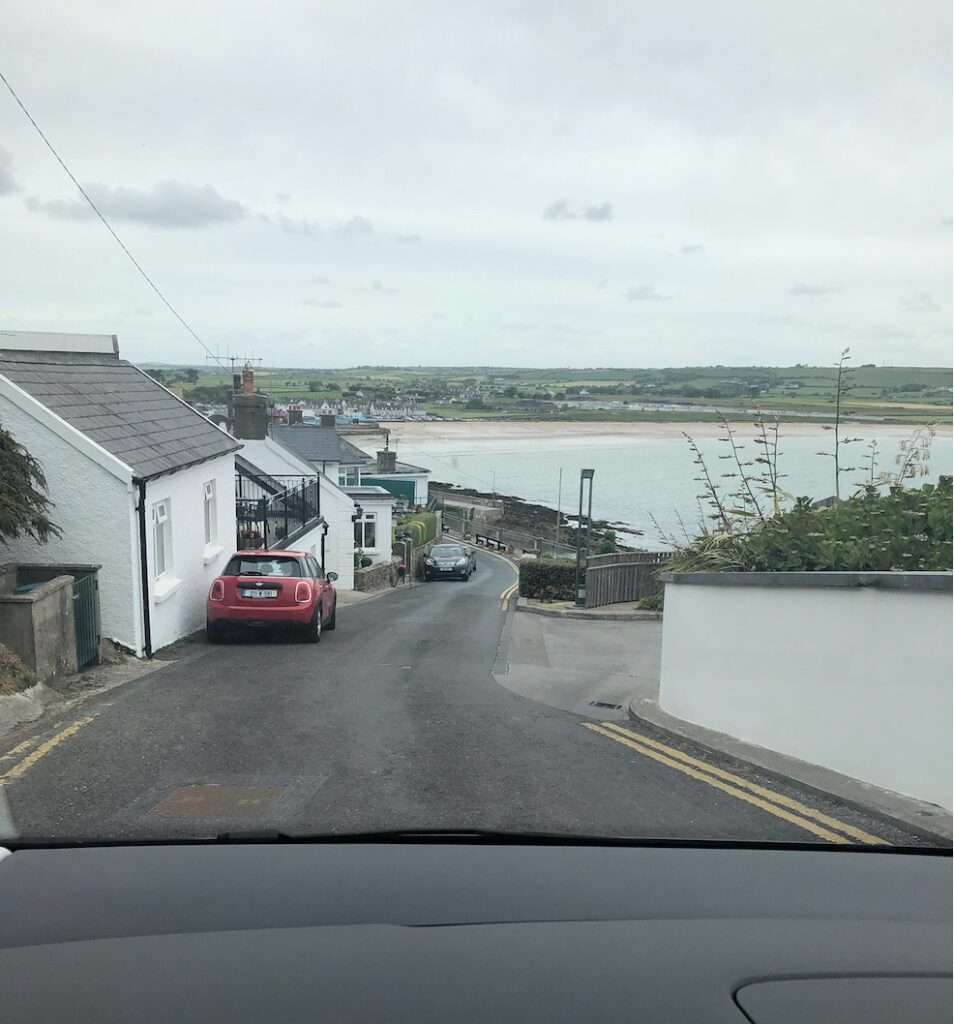This post contains affiliate links. For more info see our disclaimer.
Subscribe to the Under the Live Oak Newsletter Here
If you are going to explore Ireland, there are of course many tour options available, but the problem with tours is they usually stick to the highlights, you are on someone else’s schedule and you are forced into a group of people that you may or may not like. I love meeting people, but spending an entire day with other Americans complaining about not having it their way might not be the company you want to keep if you are looking to escape.
If you are sticking around Dublin there are many great public transit options to help you get around, but if you truly want to get out and see the emerald expanses dotted with sheep and medieval castles and ruins that make Ireland famous, you are going to have to get behind the wheel.
While driving in a foreign country on the opposite side of the road may be anxiety inducing for many, the reality is that once you get the hand of it, you can really adjust quickly and by the end of the trip it will become second nature. With some pre-planning and fortitude you will be on the road in no time. Here are some things you should know ahead of time.
Documentation and Insurance
If you are coming from the United States, your state driver’s license is perfectly acceptable in Ireland. You won’t need any further documentation to prove that you are capable of handling yourself in a vehicle.
Insurance is another story. Unlike in the US, where you can pass on the rental agency’s bloated insurance policy in favor of your own, they will not rent to you in Ireland using your own car insurance. While this was an unwelcome addition of a few hundred dollars onto a 10 day rental, there is a sense of complete liberation knowing you are not responsible if something happens to the car, and based on the many dents in the car we received, stuff happens!
With license and insurance taken care of, one last thing I would consider is a document holder like this one. Now you are ready to select a car.
Selecting a Car
The first thing to know when selecting a car in Ireland, or most of the rest of the world for that matter is that automatic transmissions are a luxury that most of us in the US take for granted. If you were taught how to drive a manual, this won’t be a problem but know that a generic rental will be a standard transmission.
To book an automatic, make sure it states so in listing and know it will definitely be more expensive. Personally I have done both and while driving the manual was fine, it was a lot nicer not having to worry about it the second time around especially given everything else you have to remember. In addition some of the hills can be a beast so driving the stick shift can be extra challenging.
If you are traveling with a larger party (we had five), you are going to need a larger vehicle to accommodate both the people and the bags. A minivan, known as a people carrier, is probably what you are going to need. In our case we put in for the Ford Galaxy class which also included the European version of the VW Tiguan which is more of a minivan style in Europe and the car we actually got which was a Spanish vehicle known as a S.E.A.T. Alhambra.
The Alhambra was fantastic because as a VW driver at home, S.E.A.T. is just a VW posing as a Spanish car. Everything was the same as far as look/feel and gauge presentation. There was also more than enough room to fit five of us plus 5 large bags and 5 bookbags, and a few groceries with the third row folded down.
Driving on the Left

If you have never experienced it before, the first time you drive on the left, all of your senses will tell you that you are doing something wrong. Fight the urge and stay left. In the cities, congested areas and strange intersections can be a bit challenging but always ask yourself where you should be after you make the turn before you start the process. Look for dividers in the road as well to make sure you end up on the proper side of the barrier and don’t end up going head on down a one way street.
In the U.S. we know that right turns are easier (after looking left) and you can make a right on red. In Ireland, it is the left turn that is easier (after looking right) and in some cases you can go left on red. Right turns in Ireland are the ones to look out for and will be the most unfamiliar to you as an American driver. You must look both ways for traffic and then make sure you are pulling onto the left hand side of the road after the turn.
Traffic circles are the norm at larger intersections. Traffic flows clockwise around the circle. Just like in the U.S. the car in the circle has the right of way. One thing I saw that was helpful was that if a car was in the traffic circle and intended to keep going around the traffic circle, they would put their right blinker on. If they intended to exit the circle they would put their left blinker on.
One absolutely nonsensical addition to some larger traffic circles (we found this in the Cork area) was a signaled traffic circle where traffic lights regulate not only your entrance into the circle but also your flow around it. I’d prefer one or the other, not both.
On the motorways (freeways or divided highways), exits are typically on the left and the slow lane is the left lane. The right lane is reserved for passing and most people return to the left after the pass, they don’t hang out in the fast lane and make your life miserable like they do in the states.
With a little practice and a day’s worth of driving, most of this will become second nature.
Navigation and Signage

Assuming you have set up your cell phone for international use, you can use Google Maps just fine to navigate around most places in Ireland. Even in the most remote areas, I was able to maintain cell service. One thing I didn’t think about ahead of time however, was having something to hold my cell phone while I was driving. I would recommend brining a cell phone holder like this one to attach to the window or vent to make this process much easier.
Signage is consistent with much of Europe. Speed limits are in kilometers per hour and signs are typically black numbers inside of a red circle. Exit signs are typically blue and show the city at the exit and cities if you continue straight.
Most signs will be in English and in Irish (Gaelic). Some Gaelic words to know include Amach (exit) and Mall (slow). Signs telling you to go mall, aren’t telling you to go shopping, they are typically alerting you that a school or a city center that you need to slow down for are just ahead. Another English saying you will need to know is “traffic calming ahead”. This means that speed limits are reducing ahead.
Passing lines on the road are somewhat similar to the US. A solid white line means do not pass and a dashed white center line will allow passing on the side it is on. One difference that is worth pointing out that dashed yellow lines on the outside of road is typically telling you that despite it being narrow, it is a two way street and to be careful because cars will be traveling in both directions.
Finally in many places you will see blue arrows pointing downward at an angle. These signs are simply showing you where to drive and can be very helpful in confusing intersections.
Types of Roads
All roads in Ireland will be preceded with one of four letters, M, N, R, or L. Which stand for Motorway, National, Regional, or Local Road. Motorways are the equivalent of Interstates in the U.S. They are divided highways with exits and generally higher speed limits.
National roads can be divided or not equivalent to our U.S. Highways. Speed limits can vary and these will typically go in and out of towns. These are typically lined and wide enough for two cars to pass freely.

Regional and Local roads is where it can start to get dicey. These roads are typically very narrow and in some places hard to fit two cars through. Hedges and vegetation is typically right up to the edge of the road and there are no shoulders. This makes driving around corners very tough and there may be spaces where one car has to find a place to pull off in order to let the other car pass. Others hazards on these roads include Lorries (trucks), farm equipment, cattle, and sheep, none of which prefer to share the road with you. Also when you are on some of these back roads, cell service can get dicey so having a map on hand to do it the old fashioned way just in case is a good idea.
Finally you should know that there is a preferred direction of travel on some popular roads such as the Ring of Kerry or on the end of the Dingle Peninsula. You will want to drive clockwise on these roads. This is the direction that all the tour buses will be driving and although you can drive counter clockwise, you will be coming face to face with a tour bus about every thirty seconds and some of the roads are too narrow to accommodate two cars passing each other. This is one unwritten rule you will want to follow.
Finally, Its always good to carry a map with you in case you are in an area where cell phone service is limited.
Tolls
Some of the motorways have tolls, and we encountered one in Limerick. These were quite easy to navigate with plenty of signage. There are lanes for cashiers, noted by the picture of the toll collector, and there are also exact change lanes. The toll for a normal car is typically 2 Euro so have some change on hand if you are going to go through a toll. Just remember with the driver side on the right, the toll collector will also be on the right. Something to keep your change in is also a good idea.
Parking
Parking is generally not too big of an issue in Ireland. Most places had street parking available. Some lots were pay lots with machines set up to collect money via coins or credit card. You will typically pay for a set amount of time and then display the ticket on the dashboard.
Parking garages are few and far between but if you do encounter one, know that they can be very hard to navigate and narrow. Most places were hard to get into and only big enough either to fit a car going up or down but not both at the same time. This usually involved pulling into a space to allow another car to pass through.
Refilling Gasoline
At some point you are going to need gas and it’s important to note that most cars in Ireland are Diesel or at least just as many as are unleaded. Know which one your car takes ahead of time by looking near the gas cap. Another important distinction is that auto Diesel which is typically a green handle in the U.S. is black in Ireland and unleaded is green.
Most stations will let you fill the tank and then pay afterwards inside the station by noting which pump you are on. A few places needed pre-payment which was either done inside or via one centrally located credit card machine used for all the pumps, not on each pump like in the U.S.
Prepare for sticker shock as one tank of Diesel can go for well over 100 Euros. While prices may seem cheap, note they are in liters and not gallons. As of this writing in July of 2022 most places in Ireland are over the equivalent of $8.00 per gallon.
Police and Other Hazards

Compared to the U.S., police were virtually non-existent in Ireland at least from a drivers perspective. In fact, I saw more school crossing guards than I did cops. There are a few places where signage indicates cameras are watching intersections or speeds but for the most part drivers stay within the expectations and are not incredibly aggressive. The only exception to this is on the narrow windy roads as the locals tend to be more used to these and want to get from point A to point B faster than seems humanly possible when trying to navigate the roads for the first time. Find a spot to pull over and let the locals pass. They will show their appreciation by blinking their hazards at you as they pass. Two seconds later they will be gone, never to be seen again.
With these tips and considerations, your driving experience in Ireland should be a positive one that can yield huge results when it comes to getting out and experiencing the peaceful Irish countryside and all it has to offer.
Check out these Irish guide books!

